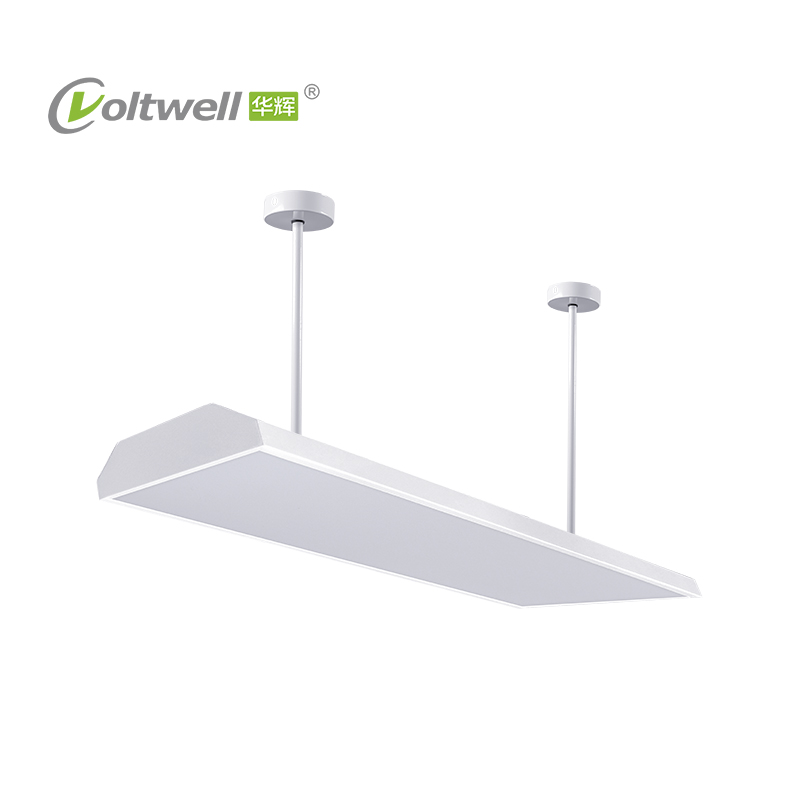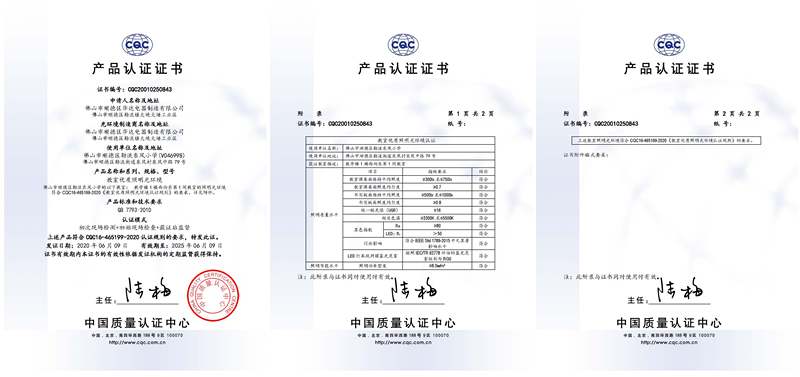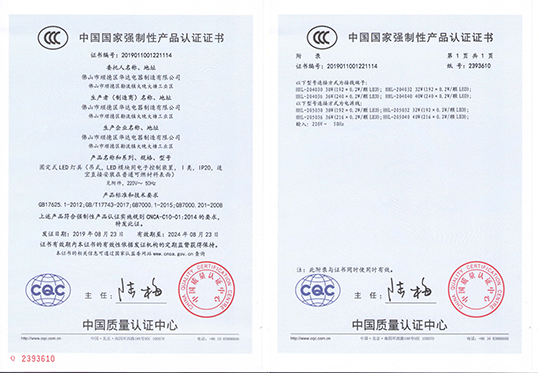
The National Health Visual Report released by the China Health Development Research Center at Peking University shows that in 2012, the total number of people aged 5 and above in China with myopia was around 450 million. Without effective policy intervention, the prevalence of myopia among the population aged 5 and above in China will increase to around 51% in 2020, with a total of 700 million people affected. According to a survey conducted by the National Center for Disease Control and Prevention, poor classroom lighting environment is one of the direct main reasons for students' visual impairment. When exposed to substandard learning lighting environments (classroom and home lighting), it is easy to cause visual fatigue, which can lead to a decrease in students' vision. Therefore, the renovation of classroom lighting is urgent. Under the promotion of policies, various parts of the country have launched the renovation of lighting equipment in primary and secondary schools, and corresponding standards for classroom lighting have been formulated.
Key Interpretation of "Hygienic Requirements for Myopia Prevention and Control of Children and Adolescents' Learning Supplies" (GB 40070-2021):
① This standard specifies the hygiene requirements for learning materials related to myopia prevention and control that children and adolescents are exposed to on a daily basis from the perspective of protecting their visual health, preventing and controlling myopia.
② In terms of classroom lighting, color temperature and color rendering index are specified, especially the special color rendering index R9 of LED lighting is required to be greater than 0, and regulations are also made for the blue light hazard and flicker of lighting.
③ For the first time, restrictions on excessive lighting have been proposed, such as in the display technology of teaching multimedia products, which specifically states that the screen should not exceed 400cd/m when using teaching multimedia products ²,; In the hygiene requirements for reading and writing desk lamps, it is proposed that when a person is in a sitting position, the surface brightness of all luminous components observed by the human eye should not exceed 2000cd/m ² The upper limit requirement plays an important guiding role in preventing glare injury to the eyes.
Key Interpretation of "Hygienic Requirements for Lighting Design and Installation of Ordinary Classrooms in Primary and Secondary Schools" (GB/T 36876-2018):
① This standard specifies the requirements for the illumination of desktop and blackboard surfaces in ordinary classrooms of primary and secondary schools, as well as the lighting design and installation of classrooms and blackboards. It mainly covers relevant indicators such as illumination, color rendering index, color temperature, light intensity distribution, unified glare value, and installation method. In addition to conventional lighting indicators, the concept of intelligent lighting is added, supporting the use of dimming systems to adjust lighting and illuminance separately.
② It is explicitly mentioned that natural light should be fully utilized. Under different meteorological conditions, it is advisable to adjust the lighting and illuminance of different areas according to the changes in outdoor natural light, which requires intelligent lighting to achieve. In addition, this standard does not have regulations for non ordinary classrooms (such as reading rooms, dance rooms, and art rooms), and also lacks important indicators such as flicker, special color rendering index, and blue light hazards that affect the overall lighting environment quality of classrooms, making it difficult to form a comprehensive understanding and guidance for users.
Key Interpretation of "Hygienic Standards for Daylighting and Lighting in Primary and Secondary School Classrooms" (GB 7793-2010):
This standard specifies the lighting and lighting requirements for school classrooms, taking into account the bidirectional important factors of lighting and lighting, which helps to strengthen users' overall understanding of the classroom lighting environment. However, the regulations for lighting and lighting are independent, and the mutual influence and interaction between the two are not elaborated. The classroom lighting indicators also do not distinguish between ordinary and professional classrooms, The recommended light source for use in this standard is a straight tube rare earth three primary fluorescent lamp with a diameter less than 26mm, and there are no requirements for photosafety indicators. This standard is difficult to adapt to the needs of current social development and needs to be updated.
Key interpretations of the "Standards for Lighting Design of Buildings" (GB 50034-2013) and "Standards for Daylighting Design of Buildings" (GB 50033-2013) include:
① This standard is the most important standard for architectural designers to design and apply lighting electrical systems, including quantity indicators (such as illuminance), quality indicators (illuminance uniformity, glare limit, light source color, color rendering, reflectance, etc.), lighting power density limits, lighting distribution and control, etc., covering lighting standards and energy-saving standards for residential buildings, public buildings, and industrial buildings.
② The focus of this standard is to specify the relevant indicators of artificial lighting, while the "Design Standard for Building Daylighting" (GB 50033-2013) clearly states that natural light resources should be fully utilized and lighting coefficients should be used to evaluate lighting effects. However, the relationship between natural light and indoor artificial lighting has not been fully explained.
③ The "Design Standards for Building Lighting" GB 50034-2013 and "Design Standards for Building Daylighting" GB 50033-2013 are still important standards for public building lighting. For example, the definition and calculation method of unified glare value (UGR) and glare value (GR) specified in the "Design Standards for Building Lighting" (GB 50034-2013) are often referenced by other standards, and the grading of illuminance standard values has always been used.
△华辉直发光led护眼教室灯
△华辉侧发光led护眼教室灯
△华辉led护眼黑板灯

△华辉led底发光教室灯005款

△华辉led底发光教室灯006款
附:华辉照明获得"教室优质照明光环境首批达标单位"

附:华辉led教室灯和led黑板灯CCC证书↓

附:教育装备行业协会会员证书↓

服务热线:0757-25539380
联系QQ:2392711759、2755796541、2736621813
Copyright © 2018 FOSHAN SHUNDE HUADA ELECTRICAL MANUFACTURE COMPANY LIMITED | All Rights Reserved Design by gdhuada.com